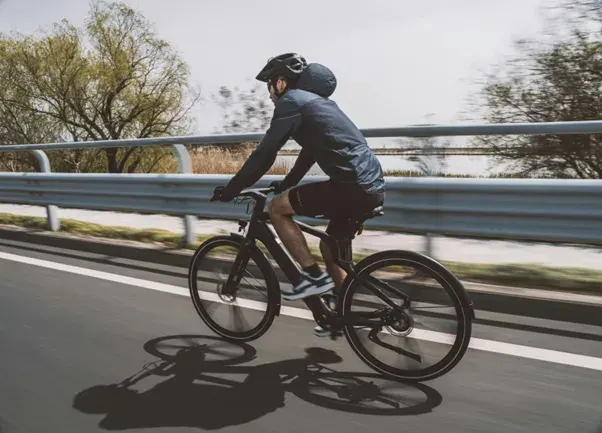
Porto to Santiago de Compostela Tour: E-Bike Route and Tips
Admin
September 30, 2025
906 words
4 minutes
Porto to Santiago de Compostela Tour: 5-Day Coastal E-Bike Itinerary
If you’ve been dreaming of a Porto to Santiago de Compostela tour, cycling it on an e-bike makes the experience accessible, scenic, and unforgettable. The Coastal Camino route offers boardwalks, ferries, and seaside towns, with bag transfers and overnight charging making it even smoother. Here’s how to complete the journey in just five days by e-bike.
Day 1: Porto to Esposende (≈60 km)
Your journey begins in Porto, where you can collect your pilgrim passport at Porto Cathedral for the all-important first stamp. Leaving the Douro River behind, you’ll follow marked cycle paths past Matosinhos, Vila do Conde, and Povoa de Varzim.
- Boardwalks: This stretch is famous for its long wooden boardwalks along the Atlantic coast, all e-bike friendly.
- Charging & storage: Hotels in Esposende typically provide safe storage. Top Bike Tours Portugal ensures your overnight stay includes e-bike charging facilities.
- Highlights: Fishing villages, sandy beaches, and the Forte de São João Baptista fortress.
Day 2: Esposende to Caminha (≈50 km)
This stage takes you through the historic city of Viana do Castelo before rolling into Caminha. The terrain is still mostly flat, with smooth paths that suit e-bikes perfectly.
- E-bike note: Expect a mix of paved coastal lanes and short cobbled sections.
- Charging & luggage: Bag transfer services mean your belongings are waiting at your hotel; charge your battery overnight for the next stage.
- Highlights: Viana’s Santa Luzia Basilica and Caminha’s medieval old town.
Day 3: Caminha to Baiona (≈40 km)
This is one of the most memorable sections of the route. You’ll take the Xacobeo Transfer ferry across the River Minho into Spain, then follow rugged coastal paths to Baiona.
Taking the Ferry Across the River Minho
- The ferry accepts e-bikes. Schedules can vary, but Top Bike Tours Portugal assists in pre-arranging tickets for a stress-free transfer.
- From A Guarda, follow coastal trails towards Baiona, with cliffs, sea views, and ancient watchtowers along the way.
Highlights: Baiona’s historic centre, Monte Real fortress, and views over the Atlantic.
Day 4: Baiona to Pontevedra (≈55–60 km)
From Baiona, the terrain becomes more varied with rolling hills and rural landscapes. You’ll cycle past the Vigo estuary before joining the main Camino routes leading into Pontevedra.
- Terrain: Some rocky and cobbled segments, but e-bikes handle these well with proper gearing.
- Charging & accommodation: E-bike storage is common in Pontevedra’s pilgrim hotels; Top Bike Tours Portugal ensures all accommodations are e-bike ready.
- Highlights: Pontevedra’s old town, with its lively plazas and historic stone buildings.
Day 5: Pontevedra to Santiago de Compostela (≈60 km)
The final stage takes you inland, joining traditional Camino paths before arriving at Santiago de Compostela Cathedral.
- Navigation: GPX files provided by operators like Top Bike Tours Portugal make this final leg straightforward.
- Compostela certificate: Cyclists must ride at least 200 km to qualify. Your 5-day e-bike journey more than covers this requirement.
- Highlights: Reaching the cathedral square, celebrating with fellow pilgrims, and collecting your Compostela certificate.
Practical Tips for E-Bike Pilgrims
Terrain & Surfaces
The Coastal Camino combines seaside boardwalks, quiet asphalt lanes, cobbled old towns, and the occasional dirt trail. Flat stretches in Portugal are beginner-friendly, but once you cross into Spain, you’ll encounter rolling hills and short climbs that test your gears and battery. Riders should be comfortable shifting on mixed terrain andconquering challenging routes with e-bikes to maintain a steady pace on uneven surfaces.
Battery Range, Charging & Storage
Most modern e-bikes can comfortably manage 80–100 km per charge, which covers each day of the Porto to Santiago E-Bike itinerary. Range can drop on hillier days or if you rely heavily on higher assist modes. To avoid battery anxiety, ride in eco or tour mode for flats and save turbo for short, steep climbs. Knowinghow far an e-bike can go helps set realistic expectations. Just make sure to plug in overnight so you start each morning with a full battery.
Most Camino towns now cater to cycling pilgrims with secure garages, lockable sheds, or dedicated charging stations in hotels and guesthouses. A small travel adapter can also be handy if you’re using outlets in older buildings.
Luggage Transfer
Cycling with full panniers can drain your battery faster and make cobbled climbs harder. Daily bag transfer services pick up your main suitcase each morning and deliver it to your next hotel, letting you ride light with only essentials like water, snacks, and tools. This not only conserves energy but also makes your e-bike more stable on narrow paths and boardwalks.
Navigation & GPX
Although the Camino is famously marked with yellow arrows and scallop shells, wayfinding can still be tricky in towns or at junctions. Downloading GPX tracks to your phone or bike computer ensures you don’t lose time doubling back. GPX files also highlight elevation changes and rest stops, which are particularly useful for planning battery use.
Final Thoughts: Cycling Porto to Santiago by E-Bike
Completing the Porto to Santiago de Compostela tour by e-bike is an achievable and enriching adventure. The Coastal Camino blends seaside paths, historic towns, and the joy of reaching Santiago with the support of your e-bike. With services like bag transfers, GPX navigation, and e-bike-friendly hotels arranged by Top Bike Tours Portugal, you can focus entirely on the ride. If you don’t already own one, consider arranging ane-bike rental in Porto so you can start your Camino fully equipped.
Ready to experience the Camino de Santiago e-bike journey? Contact Top Bike Tours Portugal to start planning your coastal adventure today.